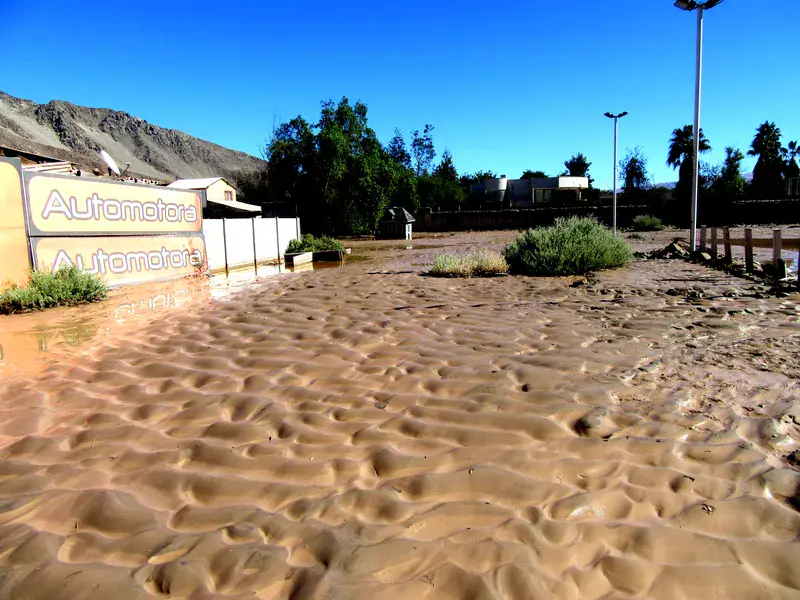
Sedimentary record of catastrophic floods in the Atacama Desert
by Manu Abad, Atacama University, Copiapó, Chile
During the severe rains that occurred between May 12 and 13, 2017 in the Atacama Region (Northern Chile) the usually dry Copiapó River experienced a fast increase in its runoff. It caused the historic center of the city of Copiapó to flood and resulted in thousands of affected houses including the University of Atacama. The city of Copiapó (~160,000 inhabitants) is the administrative capital of this Chilean Region and it is built on the Copiapó River alluvial plain. As a result, and despite being located in one of the driest deserts of the world, it has been flooded several times during the 19th and 20th century. Floods back in 2015 were amongst the worst recorded. The effects of the most recent events are, luckily, significantly milder (or far less worse) much than those of 2015 as no casualties occurred. However, more than 2,000 houses have been affected and hundreds have been completely lost. During this last event, the water height reached 75 cm over the river margins. Nearby streets where filled with torrents of mud- and sand-laden waters, with plant debris caught up in the mix too. Once the waters receded, a thick bed of randomly assorted grains of sand was deposited over the river banks and urbanized areas. The final stages of the flood were recorded in the deposits. Frozen in the body of the bed, the sand grains developed different forms and structures. A layer of only the finest grained sediments, silts and clays, bears the hallmark of the final stages of the flooding. As water speeds decrease, the finest particles are able to drop out of the water and settle over the coarser particles. Finally, a water saturated layer of mud, only a few centimeters thick, blanketed the sands, preserving the sand structures in 3D. The presence of these unusual and enigmatic muddy bedforms has been scarcely described in the scientific literature. This new study and detailed analysis will help a better understanding of the sedimentary record of catastrophic flooding and the occurrence of high-energy out-of-channel deposits in the geological record.
Manuel Abad and Tatiana Izquierdo, Universidad de Atacama (Chile)
Featured on GeoLog, the official blog of the European Geosciences Union
Categories
- Hydrological Sciences (683)
- Natural Hazards (526)
- Stratigraphy, Sedimentology and Palaeontology (531)
Location
- South America (333)
- Chile (81)
- Exact location (-70.3422 W, -27.3627 S)
Tags
Colours
Image properties
5184 × 3888 px;
image/jpeg; 13.1 MB
Camera:
Canon PowerShot SX610 HS
Software: Photoshop
Taken on 13
May
2017
Submitted on 19 May 2017
Licence
Creative Commons Attribution-NonCommercial-NoDerivs 3.0 Unported (CC BY-NC-ND 3.0)
Credit
Manu Abad (distributed via imaggeo.egu.eu)
Share
Appreciate
Report